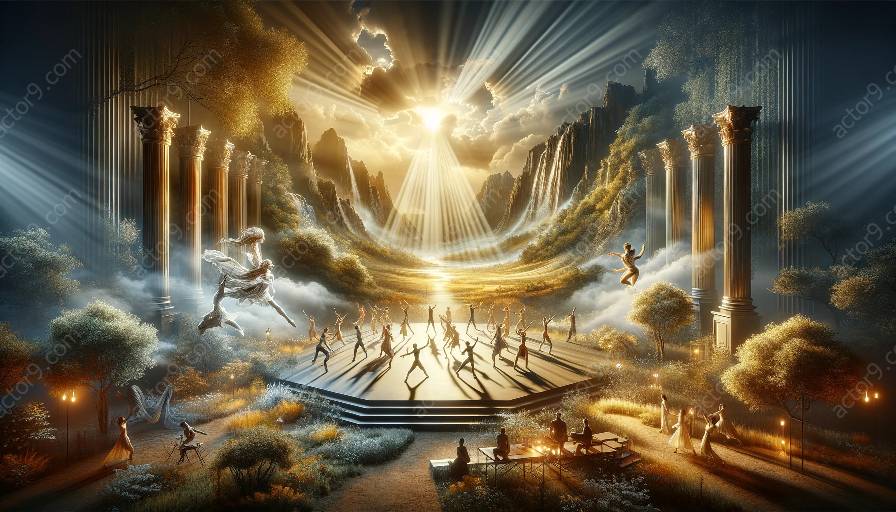Lighting design plays a pivotal role in shaping the visual aesthetic of physical theatre productions, contributing to the overall impact and storytelling. It has the power to enhance the mood, atmosphere, and emotional resonance of a performance, creating a multi-dimensional experience for the audience.
The Essence of Physical Theatre
Physical theatre, rooted in the use of physical movement, expression, and non-verbal communication, relies heavily on visual elements to convey its narrative and emotional depth. Unlike traditional theatre, physical theatre focuses on the physicality and gesture of the performers, often incorporating dance, mime, and acrobatics to tell stories and evoke emotions.
The Influence of Lighting Design
Lighting design in physical theatre serves as a dynamic tool that collaborates with movement and performance to create an immersive and compelling visual environment. By carefully manipulating light intensity, color, and positioning, lighting designers can emphasize the physicality of the performers, highlight pivotal moments, and guide the audience's focus.
Setting the Mood and Atmosphere
One of the key contributions of lighting design to physical theatre is its ability to set the mood and atmosphere of a production. Through the use of different lighting schemes, such as warm hues for intimacy or cold tones for tension, lighting designers can evoke various emotions and enhance the narrative without the need for dialogue.
Enhancing Storytelling and Symbolism
Lighting design enriches the storytelling in physical theatre by bringing symbolism and visual metaphors to life. The interplay of light and shadow can be used to represent internal struggles, transitions, and character dynamics, adding depth and complexity to the performance beyond the physical movements.
Creating Spatial Dynamics
Another significant aspect of lighting design in physical theatre is its role in creating spatial dynamics. By sculpting the stage with light, designers can manipulate the perception of space, depth, and dimension, transforming the performance area into an immersive canvas that complements the physical expressions of the performers.
The Collaborative Process
An effective lighting design for physical theatre results from a collaborative process between lighting designers, directors, choreographers, and performers. Through close coordination and understanding of the production's themes and intentions, lighting designers can tailor their designs to seamlessly integrate with the physical performances and overall vision.
Conclusion
Ultimately, lighting design significantly contributes to the overall visual aesthetic of physical theatre productions by amplifying the expressive power of physical performances, enriching storytelling through visuals, and immersing the audience in a captivating sensory experience. The synergy between lighting and physical theatre showcases the transformative potential of light in the realm of live performance, bringing narratives to life and leaving a lasting impression on the audience.




































